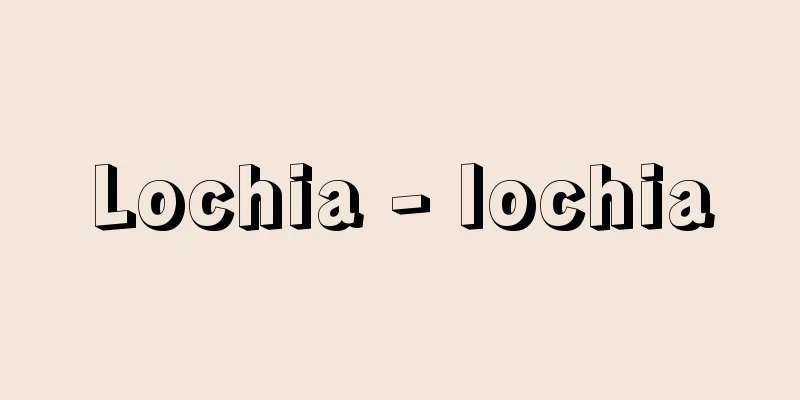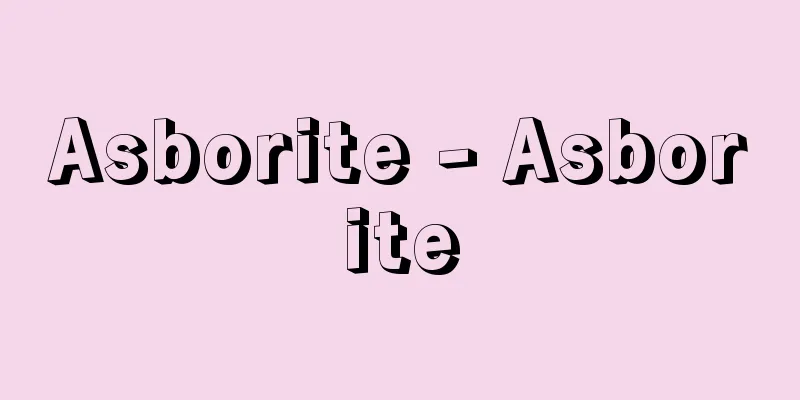New Education - Shinkyoiku

|
Broadly speaking, it means an attempt at a new education that aims to overcome the old education system, but it particularly refers to the whole of the education reform movement that spread worldwide, mainly in developed Western countries, from the end of the 19th century to the beginning of the 20th century. It is made up of a variety of theories and practices, such as the rural schools pioneered by the new school at Abbots Home in England, theories and practices born from the knowledge of disabled children educated by Montessori and O. Decroly (1871-1932), labor education that aimed to combine learning and work, the community schools that spread in northern Germany, the art education movement that aimed to develop people through art, and Dewey's experimental school and educational theory. However, they all share a common characteristic of criticizing the old teacher-centered, uniform, injectionist education under the symbolic slogan "vom kinde aus" (from the child), and attempting educational curricula and methods centered on the lives, activities, and interests of children. In Japan, the theories and practices of new education were actively introduced and introduced during the Taisho period, and a flamboyant development was seen under the name of free education or new education, but the underlying current had already been established in the 1890s by Higuchi Kanjiro (1871-1917) who advocated "activism" and Tanimoto Tomeri (1867-1946) who advocated "self-study guidance." Based on Western new educational theories, they aimed to overcome the Herbartian teaching method, which was showing its drawbacks at the time, and a similar attempt was put into practice by Oikawa Heiji, the principal of Akashi Women's Normal School Affiliated with Hyogo Prefecture. He advocated "group-style dynamic education" and from 1909 (Meiji 42) implemented a specific and systematic group-style teaching method that focused on dynamic education "learning by doing" and on the individuality of each child at the school, attracting nationwide attention in the early Taisho period. Following this, in the mid-Taisho period, at the elementary schools attached to normal schools, for example, Kinoshita Takeji (1872-1946) at the Nara Women's Higher Normal School attached to the Elementary School, Tezuka Kishie (1880-1936) at the Chiba Women's Higher Normal School attached to the Elementary School, and Kitazawa Taneichi at the Tokyo Women's Higher Normal School attached to the Elementary School, and so on, realizing "education by work." Meanwhile, from the end of the Meiji period, private schools that advocated new education were established one after another. Representative examples include Nishiyama Tetsuji's Teikoku Elementary School (1912), Nakamura Shunji's Seikei Gakuen (1912), Sawayanagi Masataro's Seijo Elementary School (1917), Hani Motoko's Jiyu Gakuen (1921), Nishimura Isaku's Bunka Gakuin (1921), Akai Yonekichi's Myojo Gakuen (1924), Noguchi Entaro and others' Jido no Mura Elementary School (1924), and Obara Kuniyoshi's Tamagawa Gakuen (1929).All of these schools provided liberal education or life education that respected the spontaneity and individuality of children and students. In this way, the stage for the spectacular theory and practice of the new education was limited to elementary schools attached to normal schools and private schools, but these schools attracted teachers from public elementary schools and generated many visitors, creating a huge wave nationwide. Symbolic of this was the "Eight Great Educational Proposals" Conference, held in the auditorium of Tokyo Higher Normal School in 1921 (Taisho 10), which attracted an audience of about 4,000 people. Here, Heiji Oikawa gave passionate speeches on "Dynamic Education Theory," Kinshichi Inage (1887-1946) on "Creative Education Theory," Choichi Higuchi (1871-1945) on "Self-Study Education Theory," Kishimoto Tezuka on "Liberal Education Theory," Nobuyuki Katagami on "Literary Education Theory," Meikichi Chiba (1887-1959) on "All Impulse Satisfaction Theory," Kiyomaru Kono (1873-1942) on "Automatic Education Theory," and Kuniyoshi Obara on "Human Education Theory." This wave of enthusiasm gradually died down in the late Taisho period due to pressure from the Ministry of Education, but it also gave rise to ideas that would lead to the educational movement of the Showa period, such as life spelling education. [Yoshikazu Mihara] "A Study of Taisho Liberal Education" by Hikaru Nakano (1968, Reimeishobo)" ▽ "Portraits of Educational Reformers" by Hikaru Nakano (1976, Kokudosha) ▽ "A 100-Year History of the New Education in Japan" edited by Kuniyoshi Obara, all 8 volumes (1980, Tamagawa University Press)" Source: Shogakukan Encyclopedia Nipponica About Encyclopedia Nipponica Information | Legend |
|
広くは旧来の教育の克服を目ざす新しい教育の試みを意味するが、とくに19世紀末から20世紀初頭にかけて欧米先進諸国を中心に世界的に広がった教育改革運動の全体をさす。イギリスのアボッツホームの新学校を嚆矢(こうし)とする田園教育舎、モンテッソリやドクロリーO. Decroly(1871―1932)の障害児教育の知見から生まれた理論と実践、学習と作業の結合を目ざした労作教育、北ドイツに広がった生活共同体学校、芸術による人間形成を目ざした芸術教育運動、デューイの実験学校と教育理論など、多様な理論と実践からなるが、およそ、「児童から」vom kinde ausという象徴的スローガンのもとに、旧来の教師中心の画一的、注入主義的教育を批判し、児童の生活、活動、興味を中心にした教育課程、教育方法を試みるという共通の性格をもっている。 日本では、大正期に新教育の理論や実践が活発に紹介、導入され、自由教育あるいは新教育の名で華やかな展開がみられたが、すでに明治30年代に、樋口(ひぐち)勘次郎(1871―1917)が「活動主義」を、谷本富(とめり)(1867―1946)が「自学輔導(ほどう)」を唱えることによって、その底流が築かれていた。それらは欧米の新教育理論に拠(よ)りつつ、当時弊害をあらわにしていたヘルバルト派教授法の克服を目ざしたものであったが、同様の試みは兵庫県明石(あかし)女子師範附属小学校主事であった及川(おいかわ)平治によって実践に移された。彼は「分団式動的教育」を唱え、1909年(明治42)から同校で、「為(な)すことによって学ばしむる」動的教育と、児童の能力差、個性に着目した分団式教授の具体的、体系的な実践を行い、大正前期には全国的な注目を集めた。これを先駆けとして、大正中期には師範学校附属小学校を舞台に、たとえば奈良女子高等師範附属小学校では木下竹次(1872―1946)が「合科学習」を、千葉師範附属小学校では手塚岸衛(きしえ)(1880―1936)が「自由教育」を、東京女子高等師範附属小学校では北沢種一が「労作教育」を、それぞれ具体化させた。一方、明治末年から新教育を標榜(ひょうぼう)する私立学校が続々と誕生した。西山哲次の帝国小学校(1912)、中村春二の成蹊(せいけい)学園(1912)、沢柳政太郎の成城小学校(1917)、羽仁(はに)もと子の自由学園(1921)、西村伊作の文化学院(1921)、赤井米吉の明星学園(1924)、野口援太郎らの児童の村小学校(1924)、小原国芳(おばらくによし)の玉川学園(1929)などが代表的なものであるが、いずれも児童・生徒の自発性、個性を尊重した自由主義的な教育あるいは生活教育を行った。 このように、新教育の華々しい理論と実践の舞台となったのは師範学校附属小学校や私立学校に限定されていたが、それらの学校は公立小学校の教師たちをひきつけ、多くの参観者を生み出すなど、全国的に大きなうねりをつくりだした。その象徴が、1921年(大正10)東京高等師範学校講堂で開かれ、約4000人の聴衆を集めた「八大教育主張」大会である。ここで、及川平治が「動的教育論」に、稲毛金七(1887―1946)が「創造教育論」に、樋口長市(1871―1945)が「自学教育論」に、手塚岸衛が「自由教育論」に、片上伸(のぶる)が「文芸教育論」に、千葉命吉(1887―1959)が「一切衝動皆満足論」に、河野清丸(1873―1942)が「自動教育論」に、小原国芳が「全人教育論」に、それぞれ熱弁を振るった。こうしたうねりは、文部省の圧力によって大正後期にはしだいに低調となっていったが、そのなかから生活綴方(つづりかた)教育など昭和期の教育運動へ連なっていくものも生まれた。 [三原芳一] 『中野光著『大正自由教育の研究』(1968・黎明書房)』▽『中野光著『教育改革者の群像』(1976・国土社)』▽『小原国芳編『日本新教育百年史』全8巻(1980・玉川大学出版部)』 出典 小学館 日本大百科全書(ニッポニカ)日本大百科全書(ニッポニカ)について 情報 | 凡例 |
<<: Xinjiang Uygur Autonomous Region
Recommend
Franz Josef Islands (English spelling) Zemlya Frantsa‐Iosifa
An archipelago in the Barents Sea, part of the Arc...
Videotex
Please see the Videotex page. Source: ASCII.jp Di...
Market
〘noun〙① A place where specific goods or securities...
Geisei [village] - Geisei
A village in Aki District, eastern Kochi Prefectur...
Common snipe (Tachigi)
A bird of the family Scolopacidae (illustration). ...
Laureion
…occupying the southeastern part of the Attica re...
Fruit drinks with berries - Fruit drinks with berries
…Currently, JAS (Japan Agricultural Standards) cl...
Isidore (Archbishop of Seville)
…Archbishop of Seville, scholar, and author. Also...
Cottony scale
Also known as Iseria scale insect. A type of insec...
Pycreus sanguinolentus (English spelling) Pycreussanguinolentus
…[Tetsuo Koyama]. … *Some of the terminology that...
ḥajj (English spelling) hajj
These facts suggest that the act of pilgrimage to...
Southern Rhodesia
…Official name: Republic of ZimbabweArea: 390,757...
Mushroom grower's lung
…A typical example is farmer's lung (farmer&#...
goshenite
…The name heliodor is now generally used for ston...
Ushin
It is also called "kokoro ari" (having ...









